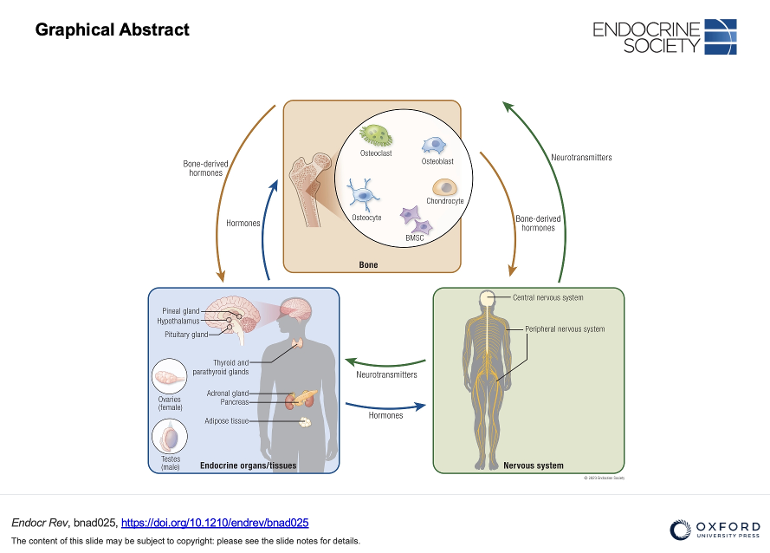Immensely frustrating that the abstract is so sparse and that is all we can access.
At present, I simply hope we can get away from the extremely simplistic view that low TSH, in itself, causes bone problems. But all we can really see is that it is complicated.
Crosstalk between the neuroendocrine system and bone homeostasis
Yuhu Zhao, Xiaole Peng, Qing Wang, Zhiyu Zhang, Liangliang Wang, Yaozeng Xu, Huilin Yang, Jiaxiang Bai, Dechun Geng
Endocrine Reviews, bnad025, doi.org/10.1210/endrev/bnad025
Published: 17 July 2023
Abstract
The homeostasis of bone microenvironment is the foundation of bone health and comprises two concerted events: bone formation by osteoblasts and bone resorption by osteoclasts. In the early 21st century, leptin, an adipocytes-derived hormone was found to affect bone homeostasis through hypothalamic relay and sympathetic nervous system, involving neurotransmitters like serotonin and norepinephrine. This discovery has provided a new perspective regarding the synergistic effects of endocrine and nervous systems on skeletal homeostasis. Since then, more studies were conducted, gradually uncovering the complex neuroendocrine regulation underlying bone homeostasis. Intriguingly, bone is also considered as an endocrine organ that can produce regulatory factors which in turn exert effects on neuroendocrine activities. After decades of exploration into bone regulation mechanisms, separate bioactive factors have been extensively investigated, whereas few studies have systematically shown a global view of bone homeostasis regulation. Therefore, we summarized the previously studied regulatory patterns from nervous system and endocrine system to bone. This review will provide readers with a panoramic view of the intimate relationship between the neuroendocrine system and bone, compensating for current understanding of the regulation patterns of bone homeostasis, and probably developing new therapeutic strategies for its related disorders.
Abstract only available:
